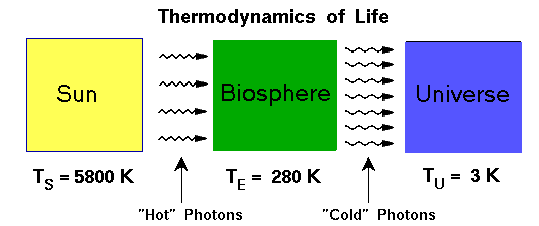By Rich Feldenberg:
Your Winter Solstice this year (2015) will take place on December 21st at precisely 10:49pm Central Standard Time. The Winter Solstice is a consequence of the tilt of earth’s axis in relation to the sun, and at this time each year, the Northern Hemisphere is maximally tilted away from the sun by -23.5 degrees. This results in the sun being at it’s lowest point in the sky from our earthly perspective in the Northern Hemisphere, and leads to the day with the shortest daylight hours and longest night. So, axial tilt really is the reason for the season.

It may be true that many people today are not terribly concerned about the Winter Solstice, but to our ancestors living in pre-modern societies, hoping to survive through another harsh winter, the Winter Solstice had extreme importance, and was perhaps reason for celebration. For it was now that the daylight would begin to return to the world again. The journey back to Springtime had finally begun. Imagine living in a world without electric lights, central heating, a reliable food supply, and the only the most primitive technology and medicine. Our ancestors had to use all the clues that mother nature provided to figure out what gave them the best chances to stay alive.
As Neil Degrasse Tyson pointed out in his article, “Stick in the mud astronomy”, if you place a stick in the ground you can learn a lot! You’ll find that the sun casts a shadow of the stick, and that you can trace this shadow throughout the year. If you use the stick-shadow method to observe where the sun rises each day of the year you’ll find that the sun rises in a different place through the course of the year. Follow it through for the entire 365 days of year and you will trace out a figure 8 pattern. This occurs due to the eliptical orbit of the earth around the sun. The sun will be at its lowest point on the horizon, and cast the longest shadow, on the Winter Solstice. On the Winter Solstice the sun will be directly overhead at noontime on the Tropic of Capricorn, in the Southern hemisphere. There will also be two days of the year where your stick will cast shadows in the exact opposite direction at sunrise and sunset. This is on the spring and fall equinoxes. Its possible that people have taken the time to measure the Winter Solstice in this way for thousands, if not tens of thousands of years. Why would they bother?
The monument at Stonehenge gives us some insight into the importance of the Winter Solstice to the prehistoric Neolithic people. Its huge stones are arranged to allow sunlight to pass through a certain configuration at the time of the Winter Solstice. One of its functions was to act as a celestial calendar, so the timing of the solstice could be precisely measured. Stonehenge is thought to have been built around 4000 to 5000 years ago, but there is evidence for wooden posts in the area that may have served similar functions, dating back 8000 years or more. Back in these ancient societies, farm animals were slaughtered at the Winter Solstice, so they didn’t need to be fed for the remaining winter time.

Its no coincidence that many celebrations were observed throughout the millennia by ancient peoples around the time of the Winter Solstice. The Feast of Juul was celebrated in Pre-Christian european societies, and the Juul log (Yule log) was a tradition where a large log or tree was burned to honor the god Thor. Saturnalia was observed by the Romans to honor the god Saturn. There were the traditional exchange of gifts and lighting of candles and bonfires, but it sounds as though this was also a rather unpleasant time as it typically degenerated into a period of murder, robbery, rape, vandalism, and so on, as there was no enforcement of the law during Saturnalia. Of course, in our modern society Christmas is celebrated on and around December 25th. The bible does not give a specific date for the birth of Jesus, but many scholars believe the date for Christmas celebration was chosen because of the pagan celebrations of Saturnalia and others could then more easily abandoned by switching one set of traditional celebration with a new set. The first known celebration of Christmas was in 336AD by the Roman Emperor Constantine.

Not really related to the Winter Solstice, but worth pointing out is that Sir Isaac Newton was born on December 25th 1642. Many science enthusiasts and secular humanists enjoy celebrating Newton on this day to honor his important contributions to science. Newton was a founder of modern science, inventing calculus to complete his calculations of physical motion. He is also known for his many additional contributions, including his law of gravitation, study of light and optics, improvement in telescope design, and more mathematical developments, as well. He was born on December 25th by the calendar in use at the time – the Julian calendar. The Gregorian calendar, which is our modern version, replaced the Julian calendar because it was more accurate, using the concept of the leap year to keep the seasons from drifting into other parts of the year. It’s original purpose was to prevent Easter from moving into other months as the earths rotation around the sun is not an exact 365 days. By the Gregorian calendar, Newton would have been born on January 4th, 1643. Anyway, Merry Newtonmass to my fellow science enthusiasts.

Merry Newtonmass to you good Sir!
The Winter Solstice is a reminder that we are still just inhabitants of planet earth, exposing our kinship to our cosmic environment. We have gained so much more knowledge -thanks to the ingenuity of our species – than our prehistoric ancestors had about what the earth and sun really are, how they move through space, and where we come from, but at the same time we seem to have lost the sense of oneness with the universe that our ancestors must have felt. We are riding on a spinning mass of rock as it circles a star in an enormous galaxy. The ancients knew that they were connected to the clockwork of the heavens. In our modern society we all too often forget that we also have that connection with the earth and solar system. We don’t worry as much that our families might not make it through the winter, this time. That our entire village might die of starvation, cold, or sickness. Most of us have enough food to eat, heated homes, and access to medical care. Sure, we all have new and different kinds of worries that our distant ancestors wouldn’t have understood, but they may have displayed some wisdom that we can still benefit from if we pay attention. So Happy Winter Solstice. May you and your family be happy and safe this holiday.
References:
1. Winter Solstice, The Telegraph, Dec. 20. 2015.
2. Stonehenge Wikipedia.

















